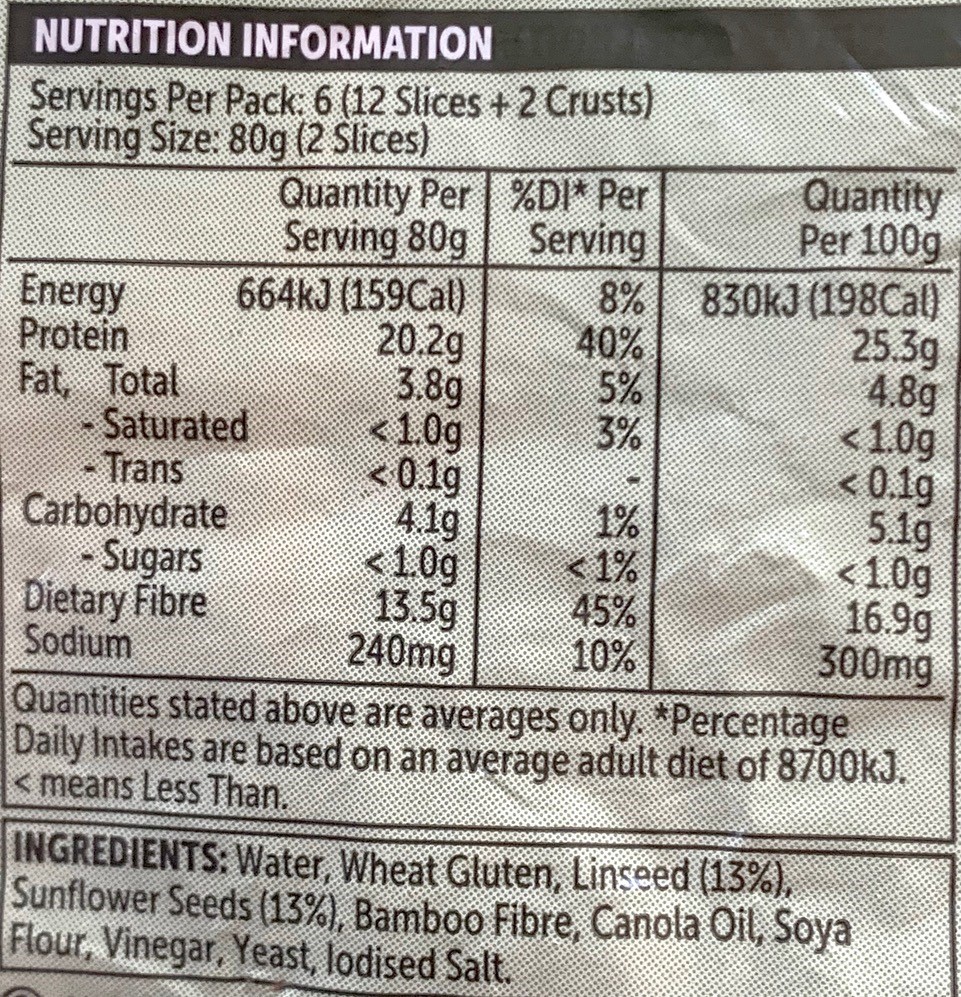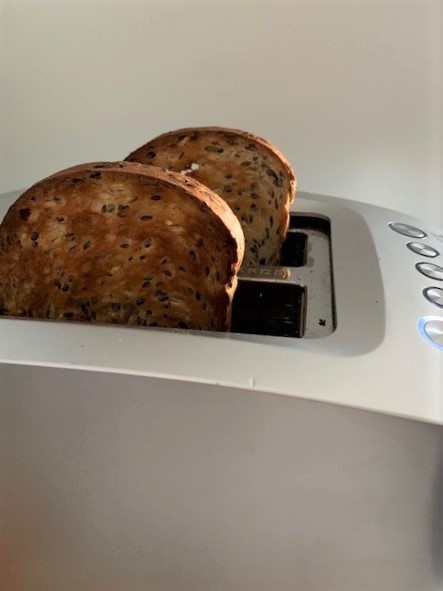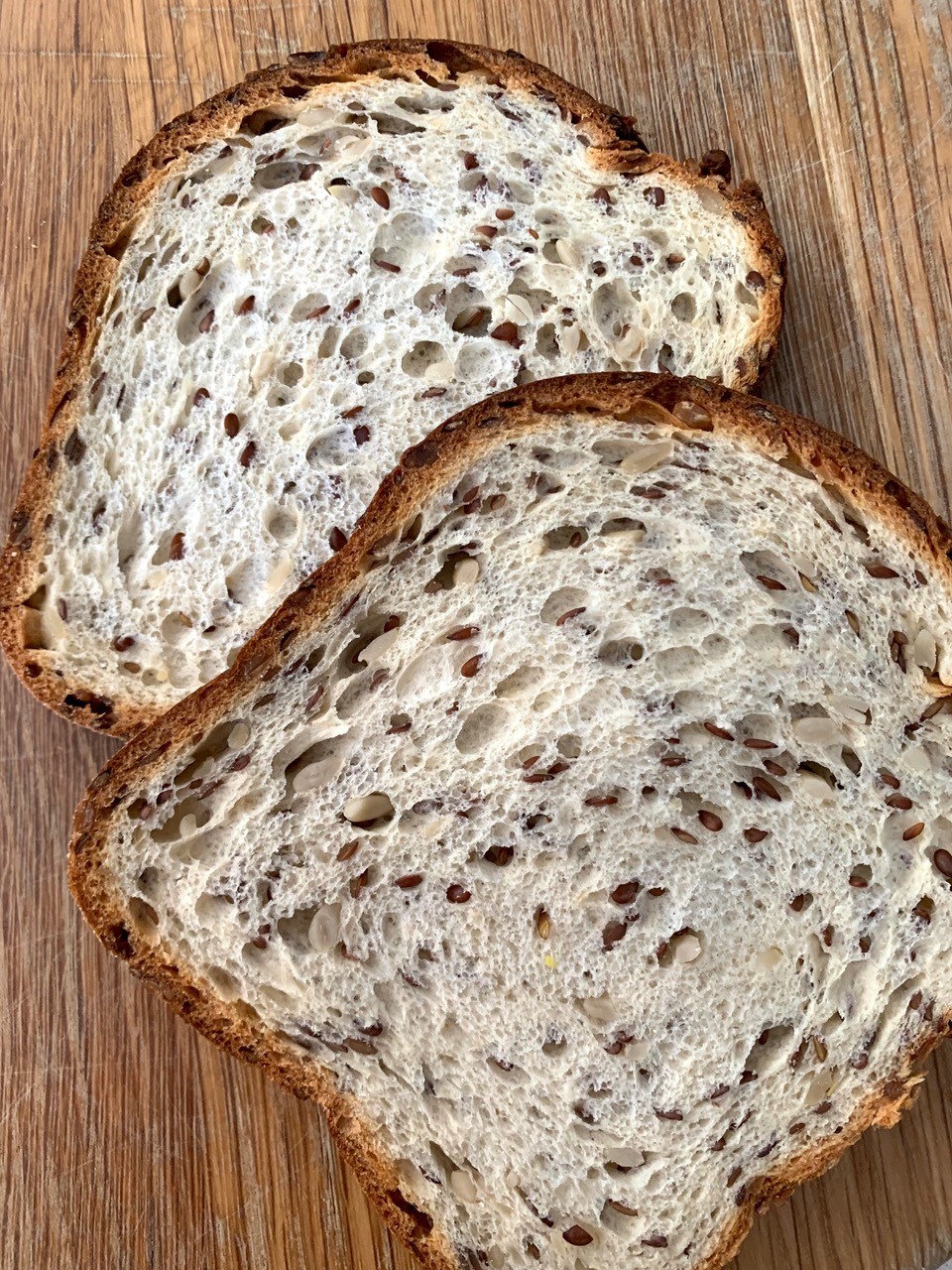Product Snapshot – Macro Linseed and Sunflower Low Carb Loaf
Written by Guest reviewer
on Wednesday, 13 November 2019.
Tagged: bread, health, high fibre, low carb, nutrition, Product snapshot, review

In the recent Healthy Food Guide Magazine Awards, I noticed a new product by Macro - a “Linseed & Sunflower low carb loaf”.
Wandering through my local Woollies, I was pleased to see it on the shelf in the fresh bakery section. Naturally I grabbed a loaf and here are my thoughts.
Low carb products are super popular at the moment - one bread at Aldi that was previously reviewed on the Foodwatch website has “cult status” and regularly sells out. Two others reviewed on this site are one by The Protein Bread Co and another by Hermanbrot.
Short ingredient list
I was impressed by the short ingredient list:
| Water, Wheat Gluten, Linseed (13%), Sunflower Seeds (13%), Bamboo Fibre, Canola Oil, Soya Flour, Vinegar, Yeast, Iodised Salt |
Often with low carb products, I find that in an effort to reduce the carbs, the fat content has been bumped up considerably. However, this bread has a fat content in line with regular breads of under 5 per cent.

How do they do it?
This product uses two novel ingredients that are worth mentioning:
1. Wheat gluten
Also known as seitan, it is made out of hydrated gluten, the main protein found in wheat. It is produced by kneading wheat flour with water to develop sticky strands of the gluten protein. The dough is then rinsed to wash away all the starch. Wheat protein contains roughly the same amount of protein per gram as animal meat and is a good source of several minerals, in particular selenium and iron. It is also low in carbohydrates because the starch normally found in wheat flour is washed away in the process of making it.
Since wheat grains are nearly fat-free, wheat gluten also contains very little fat. As seitan is made from wheat, it must be avoided by people who cannot eat wheat or gluten.
What is most noteworthy about the gluten in this loaf is the quantity. Gluten is often used in bread from soft white loaves to high fibre, wholegrain loaves to assist it to hold its structure. However, if you look at the list of ingredients you will see that gluten comes usually around the fourth to sixth ingredient by weight, whereas in this loaf it is second after water!
2. Bamboo fibre
Often used in gluten free foods, this is made from bamboo shoots. It is tasteless and consists of 98 per cent dietary fibre.
Pros
- Two slices give you 13 g of fibre – taking you well on the way to your daily target of 25-30g
- It has much more protein than most breads which will help you feel full for longer. In fact, two slices contain 20 grams of protein which is equivalent to the protein from 80 grams of chicken
- Health Star Rating of 5 (the highest)
- Contains linseeds and sunflower seeds, both sources of omega-3 essential fats
- Short, “clean”, ingredient list
- It toasts and freezes well. I toasted it from both fresh and frozen and it browned nicely
- Relatively low in sodium at 240 mg per serve, compared to around 350 mg per serve in regular bread
- Tastes pretty good. My carb-loving husband loves a good slice of bread and was happy to eat this, although he commented on the texture
- Has only 4.1g of carbohydrate per serve of two slices – or around 5 g per 100 g
Cons
- It’s only available in one supermarket chain and isn’t in all stores. I tried a few stores before I was able to find it.
- A little dry and spongy in texture.
- The low amount of sodium affected the taste. However, I think you would get used to this.
- At $5 for a 500 g loaf, it is more expensive than a similar quantity of supermarket wholegrain bread (which costs $3-$4 or less).
- It is delivered to the supermarkets frozen, so not a fresh baked loaf.
The bottom line
So, would I buy this bread again? Probably. It would be handy in winter to “round out” a meal of vegetable soup by increasing the protein so that you aren’t hungry later. I preferred the texture to the Aldi low carb loaf as it tasted more like “bread”, although I did notice the low salt content and slightly spongy texture.
While low-carb breads are in vogue at the moment, I’d also say that there’s nothing to fear from a regular, good quality wholegrain bread (unless you are coeliac) such as Burgen or Tip-Top 9 Grain Wholemeal. Cereal grains provide plant-based protein and the fibre helps to keep you regular; their whole grains reduce the risk of bowel disease and help fuel a healthy microbiome. In addition, wholegrain bread provides a source of carbohydrates to fuel both your muscles and your brain. However, if you’re after a low-carb bread, Macro Linseed and Sunflower Low Carb Loaf would be my pick of the options.
Note: I wouldn’t serve this high-protein bread to kids under the age of 13 as the amount of protein is just too much for their kidneys – the Recommended Daily Intake of protein for children is only 20 to 40 g a day.
More details at Woolworths
Thanks to Rachel Eagleton for this taste test. Rachel is a university qualified Clinical Nutritionist based in Sydney, Australia. She is also the busy working mum of two teenagers, so is realistic with her advice. You can find her at racheleagleton.com.au and on Facebook and Instagram.
Foodwatch
The Good Stuff
The Boring Stuff
© 2025 Foodwatch Australia. All rights reserved
Website by Joomstore eCommerce







